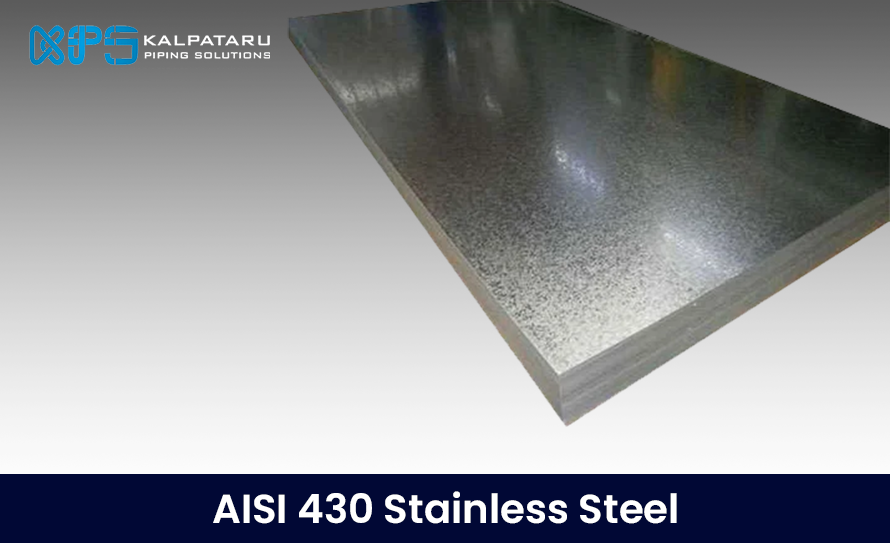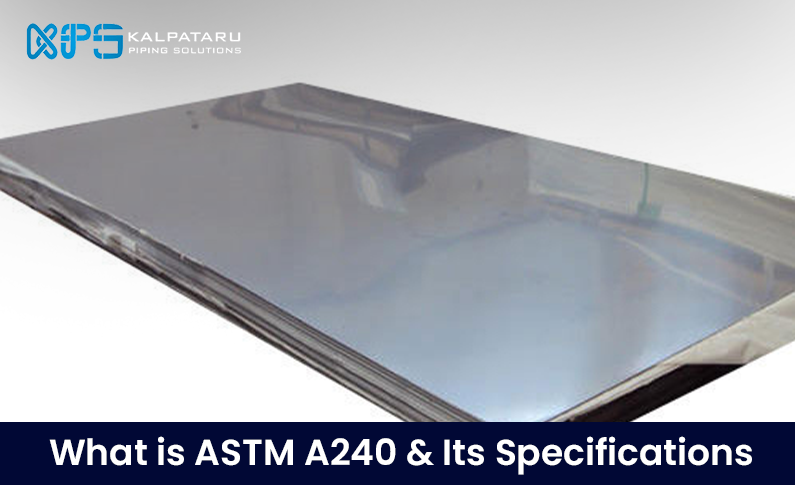Super Duplex Stainless Steels and Their Characteristics
Duplex stainless steels were first developed in Sweden over 70 years ago to address corrosion challenges in the sulfite paper industry. These alloys, called “Duplex” due to their mixed microstructure of roughly equal parts ferrite and austenite, were designed to handle aggressive chemical environments, such as chloride-bearing cooling waters. Over time, the family of Duplex steels expanded, with corrosion resistance varying based on alloy composition.
The term “Super-Duplex” was introduced in the 1980s to describe highly alloyed, high-performance Duplex steels with a pitting resistance equivalent (PRE) greater than 40, based on the formula Cr% + 3.3Mo% + 16N%. This type of steel offers exceptional resistance to harsh conditions, making it suitable for industries facing severe corrosion challenges.
Super-Duplex steels owe their superior properties to their chemical composition, which includes high levels of chromium, molybdenum, and nickel. These elements enhance resistance to intergranular and pitting corrosion. The addition of nitrogen strengthens the steel through structural hardening without sacrificing toughness.
Super-Duplex steels have gained widespread use in the marine, chemical, and architectural sectors. Recent advancements in wire processing have enabled the production of high-strength, corrosion-resistant wires as thin as 1 mm. These steels are also used in applications like mast riggings, lifting equipment, and well-service strands, showcasing their versatility and reliability.
Different Types of Duplex Alloys
Super-Duplex stainless steels are part of the larger group of Duplex stainless steels. These steels are categorized based on their corrosion resistance, which depends on their alloy content. Modern Duplex stainless steels are generally divided into four main groups:
- Lean Duplex: An entry-level grade like 2304, which does not have added molybdenum.
- 2205: The most commonly used grade, known as the “workhorse” of Duplex steels, making up over 80% of all Duplex steel usage.
- 25 Cr Duplex: This includes grades like Alloy 255 and DP-3, offering good corrosion resistance with 25% chromium content.
- Super-Duplex: Features 25-26% chromium with higher levels of molybdenum and nitrogen compared to 25 Cr grades. Examples include grades like 2507, Zeron 100, UR 52N+, and DP-3W, which are designed for extreme corrosion resistance.
Composition of Duplex Stainless Steels
| UNS Number | Typeⁿ | C | Mn | P | S | Si | Cr | Ni | Mo | N | Cu | Other |
| S31200 | … | 0.030 | 2.00 | 0.045 | 0.030 | 1.00 | 24.0-26.0 | 5.5-6.5 | 1.20-2.00 | 0.14-0.20 | … | … |
| S31260 | … | 0.03 | 1.00 | 0.030 | 0.030 | 0.75 | 24.0-26.0 | 5.5-6.5 | 2.5-3.0 | 0.20-0.30 | 0.20-0.60 | W 0.10-0.20 |
| S31803 | … | 0.02 | 2.00 | 0.030 | 0.020 | 1.00 | 21.0-23.0 | 4.5-6.5 | 2.5-3.5 | 0.08-0.20 | … | … |
| S32001 | … | 0.030 | 4.0-6.0 | 0.040 | 0.030 | 1.00 | 22.0-23.0 | 1.4-1.6 | 0.60 | 0.05-0.17 | 1.00 | … |
| S32205 | 2205 | 0.030 | 2.00 | 0.030 | 0.020 | 1.00 | 19.5-23.5 | 4.5-6.5 | 3.0-3.5 | 0.14-0.20 | … | … |
| S32304 | 2304 | 0.030 | 2.50 | 0.040 | 0.030 | 1.00 | 21.5-23.5 | 3.0-5.5 | 0.05-0.60 | 0.05-0.20 | 0.05-0.60 | … |
| S32520 | … | 0.04 | 2.00 | 0.035 | 0.030 | 1.00 | 24.0-26.0 | 5.5-7.5 | 3.0-4.0 | 0.10-0.30 | 1.0-2.0 | … |
| S32550 | 255 | 0.04 | 1.50 | 0.040 | 0.030 | 1.00 | 24.0-27.0 | 4.5-6.5 | 2.9-3.9 | 0.10-0.25 | 1.5-2.5 | … |
| S32750 | 2507 | 0.03 | 1.20 | 0.035 | 0.020 | 0.80 | 24.0-26.0 | 6.0-8.0 | 3.0-5.0 | 0.24-0.32 | 0.50 | … |
| S32760 | … | 0.03 | 1.00 | 0.030 | 0.010 | 0.80 | 24.0-26.0 | 6.0-8.0 | 3.0-5.0 | 0.20-0.30 | 0.50-1.00 | … |
| S32900 | 329 d | 0.10 | 2.00 | 0.040 | 0.030 | 0.75 | 23.0-28.0 | 2.5-5.0 | 1.0-2.0 | … | … | c |
| S32950 | … | 0.03 | 2.00 | 0.035 | … | … | 25.0-28.0 | 5.0-8.0 | 2.5-5.0 | … | … | … |
- Weight Percent: All values refer to maximum weight percentages unless otherwise stated.
- Common Name: Terms used are standard, widely recognized names and are not trademarks. These are as listed in ASTM A 240.
- Pitting Resistance Equivalent (PRE): The formula Cr + 3.3Mo + 16N should be at least 40, unless specified otherwise.
- AISI Designation: Refers to the designation provided by the American Iron and Steel Institute (AISI).
Benefits of Super-Duplex Stainless Steels
- High Strength: Offers exceptional strength for demanding applications.
- Strong Corrosion Resistance: Provides excellent protection against pitting and crevice corrosion.
- Durability: Resists stress corrosion cracking, corrosion fatigue, and erosion effectively.
- Chloride Stress-Corrosion Cracking Resistance: Performs well in environments with chlorides.
- Thermal Properties: High thermal conductivity expansion.
- Sulfide Stress Corrosion Resistance: Shows good resistance to sulfide stress corrosion.
- Workability and Weldability: Easy to shape and join, making it suitable for complex constructions.
- Energy Absorption: Capable of absorbing significant energy, adding to safety in critical applications.
Applications of Super-Duplex Stainless Steels
- Heat Exchangers and Pipes: Used for gas and oil production and transport.
- Desalination Plants: Key components in heat exchangers and piping.
- Structural and Mechanical Parts: Suitable for various construction needs.
- Power Industry: Used in FGD (Flue Gas Desulfurization) systems.
- Process Industries: Pipes for handling chloride-containing solutions.
- Industrial Systems: Ideal for rotors, fans, shafts, and press rolls due to their high corrosion fatigue strength.
- Chemical Tankers: Cargo tanks, vessels, piping, and welding materials.
- Wiring: High-strength, corrosion-resistant wiring applications.
Conclusion
Super-Duplex stainless steels are a powerful and advanced material choice for industries that require exceptional corrosion resistance, high strength, and durability. With their unique two-phase microstructure and high alloy content, these steels outperform traditional materials in challenging environments, offering reliable solutions in fields such as chemical processing, marine, and power generation. The development and continued use of Super-Duplex steels showcase their growing importance in modern engineering, making them essential for applications that demand both performance and resilience.
FAQs
What are super duplex stainless steels?
Super duplex stainless steels are high-performance alloys with approximately 25% chromium content, featuring a microstructure of both austenitic and ferritic grains for enhanced strength and corrosion resistance.
What is the composition of super stainless steel?
Super stainless steel contains high amounts of nickel, chromium, and molybdenum, differentiating it from ordinary stainless steel. This composition enhances its strength, corrosion resistance, and durability.
What grade is super duplex stainless steel?
Super duplex stainless steel grades, such as F53 (UNS S32750) and F55 (UNS S32760), have high corrosion resistance and strength due to their chromium, molybdenum, and nitrogen content.




